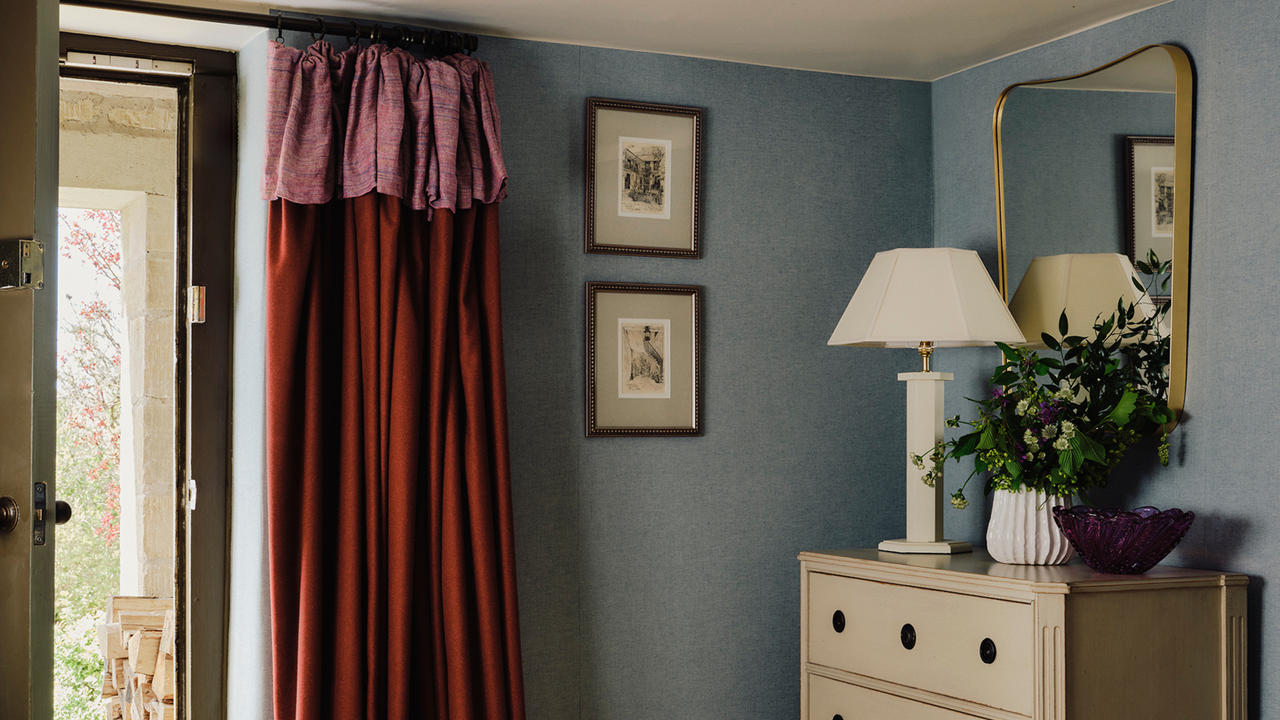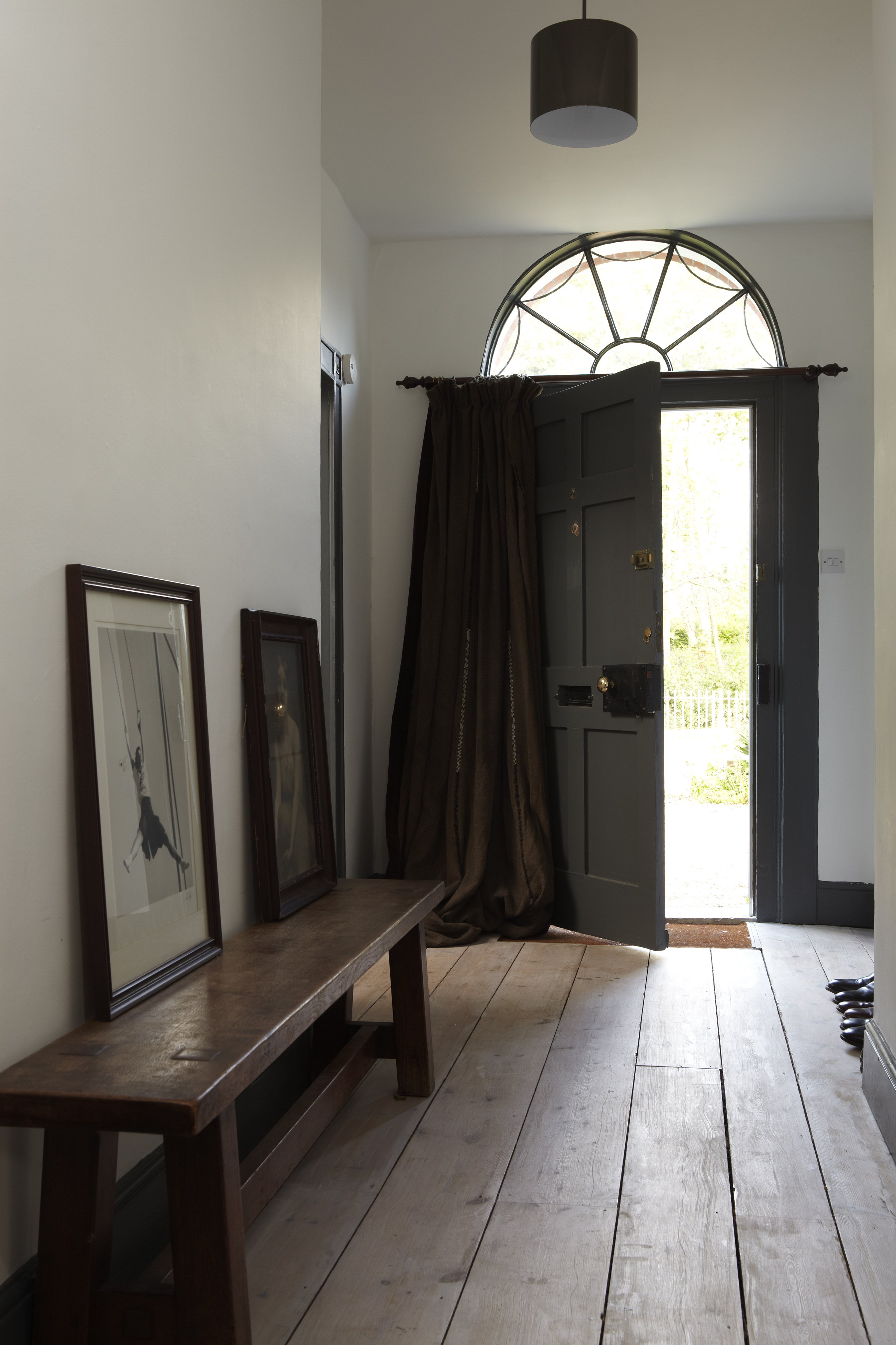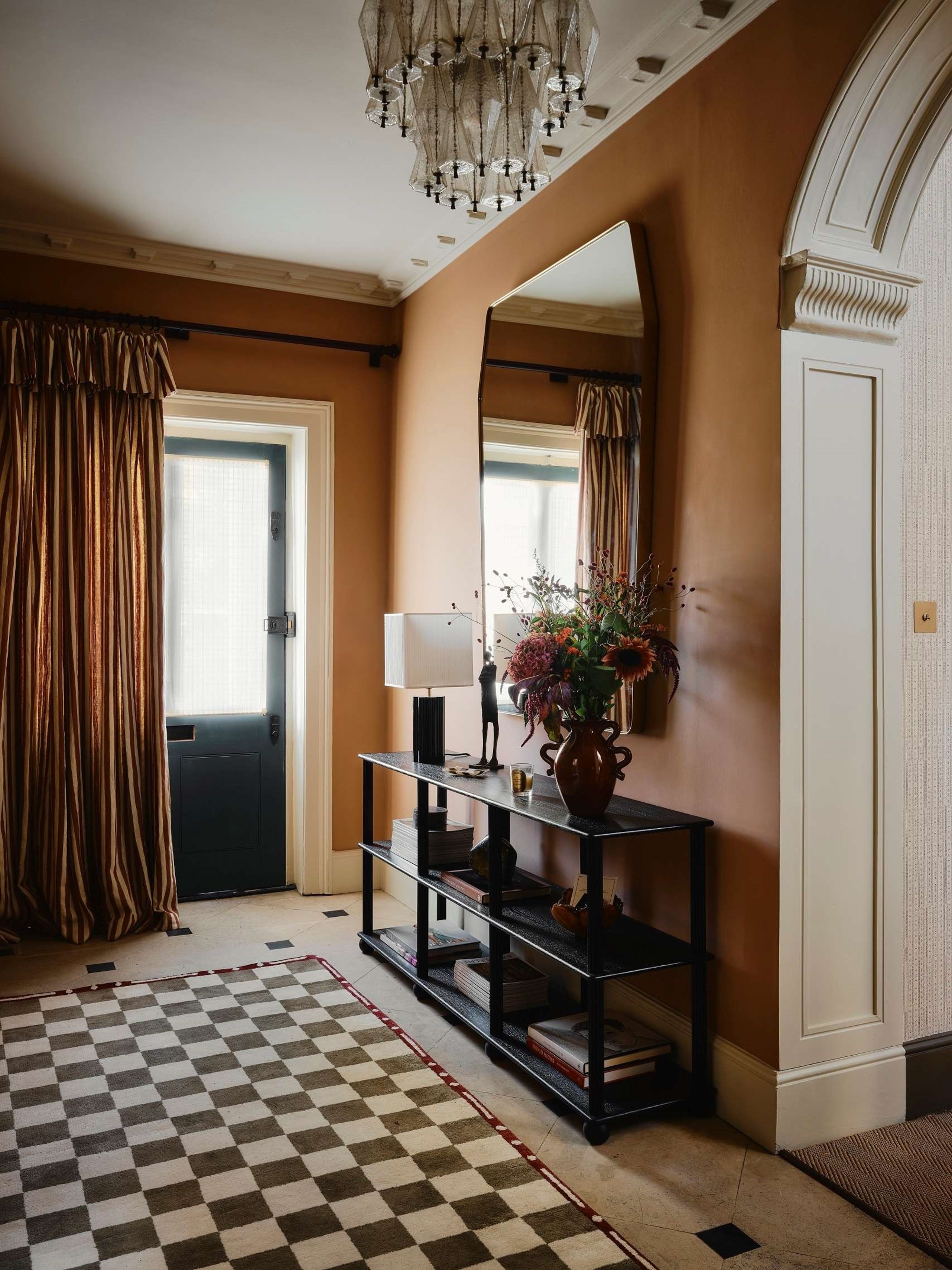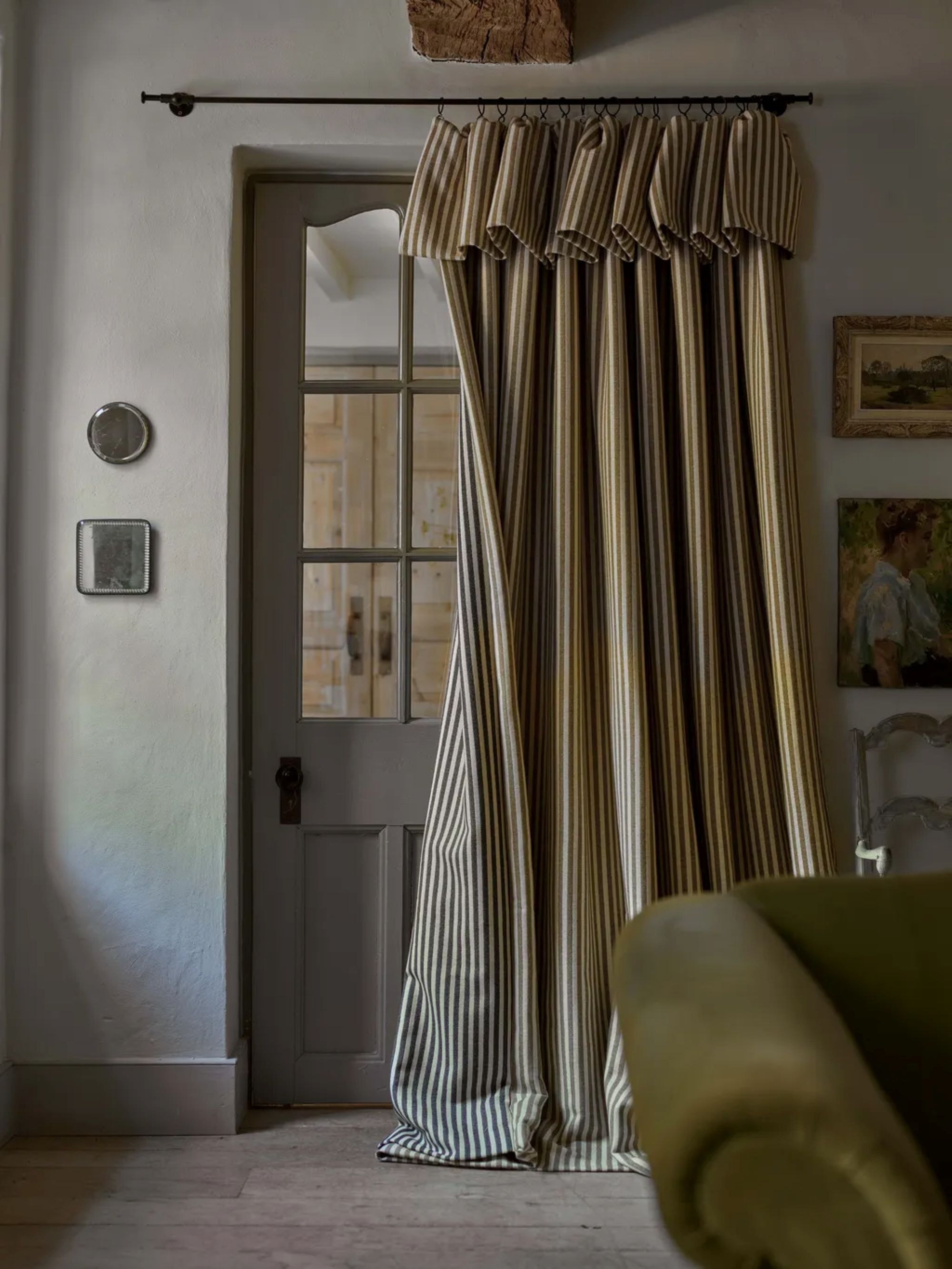
While a change in season is always exciting, adjusting your home to stay cozy in the colder months requires planning and preparation. Sure, it's easy to add throw blankets and plush pillows to your living room for extra warmth, but for a thoroughly cozy atmosphere, the best thing to do is cut the cold draft right at the source. Ever thought of installing thermal door curtains? Well, you should.
Thermal curtains positioned over the front door (or any door leading outside, for that matter) are one of the quickest (and can actually be the most stylish) ways to draft-proof an entryway. Why? Well, the magic of thermal door curtains is in the name: putting a thermal curtain over the front door will block the cold air from getting in and keep the warm air from escaping. And voilà — a warmer house and an excuse to add fabulous fabric to your door frame.
For everything you need to know to try this tip, read on.
Why You Should Put Thermal Curtains on the Front Door

As temperatures drop, the front door becomes one of the biggest culprits for heat loss, yet it is also the first place guests see when they walk in. Interior designer Nina Lichtenstein says, "Using a thermal curtain here is not only practical, it is a beautiful way to soften an entryway idea and make the space feel instantly more welcoming."
From a functional standpoint, thermal door curtains act as a barrier against drafts and temperature fluctuations. They create an insulating layer of air between the fabric and the door, helping to keep warm air in and cold air out.
"This simple addition can make a surprising difference in comfort and energy efficiency, especially in older homes or those with less-than-perfect seals," adds Nina. It’s a trick that makes your curtains feel warmer, while also boosting the temperature of the whole room.
Opting for a neutral shade can help thermal curtains appear less heavy. Plus, the eyelet hook style will allow for a delicate pleat.
Or you can lean into the cozy, thermal aesthetic and opt for something more dramatic and autumnal like this ochre velvet curtain from La Redoute.
The pencil pleat on this John Lewis thermal curtain elevates the style, while the sage green provides a calming, grounded effect.
How to Style Thermal Door Curtains

When it comes to styling these doorway curtain ideas, there are plenty of ways to get creative. In terms of materials and different types of curtains, Nina says, "A dense, lined fabric such as velvet, wool, or a heavyweight linen blend with a thermal backing works best."
These natural fibers add warmth, both visually and physically, while the texture invites a sense of coziness that synthetic options rarely match.
When installing thermal door curtains, choosing the right curtain rails is an essential step. "A ceiling-mounted rod that extends several inches beyond the door frame is ideal," says Nina. This ensures the curtain fully covers the entry and prevents heat from escaping around the edges.
If space allows, add a decorative holdback or curtain tieback to gather the curtain during the day, allowing light to filter through while still keeping the look intentional and tailored.
And, of course, length matters too. Let the curtain just kiss the floor or puddle slightly for a layered, luxurious feel. A small detail like that can elevate the look from purely practical to polished and inviting.
A sliding rod could also be useful for a front door style, as it will make opening and closing the curtain much easier.
This curved curtain pole from Pottery Barn extends just far enough from the wall that your curtains will have room to breathe.
When installing front door curtains, ease of use should be at the front of mind. This curtain hold is not only stylish, but will be quicker and easier to use than a traditional tie.

A thermal door curtain is one of those rare design choices that bridges function and feeling. "It keeps the warmth in, buffers the noise, and visually transforms the entryway into a soft threshold between outdoors and in, a gentle reminder that home is where warmth truly begins," says Nina.
Ditch the drafts this winter, and keep your entryway feeling warm (without turning up the heating).







